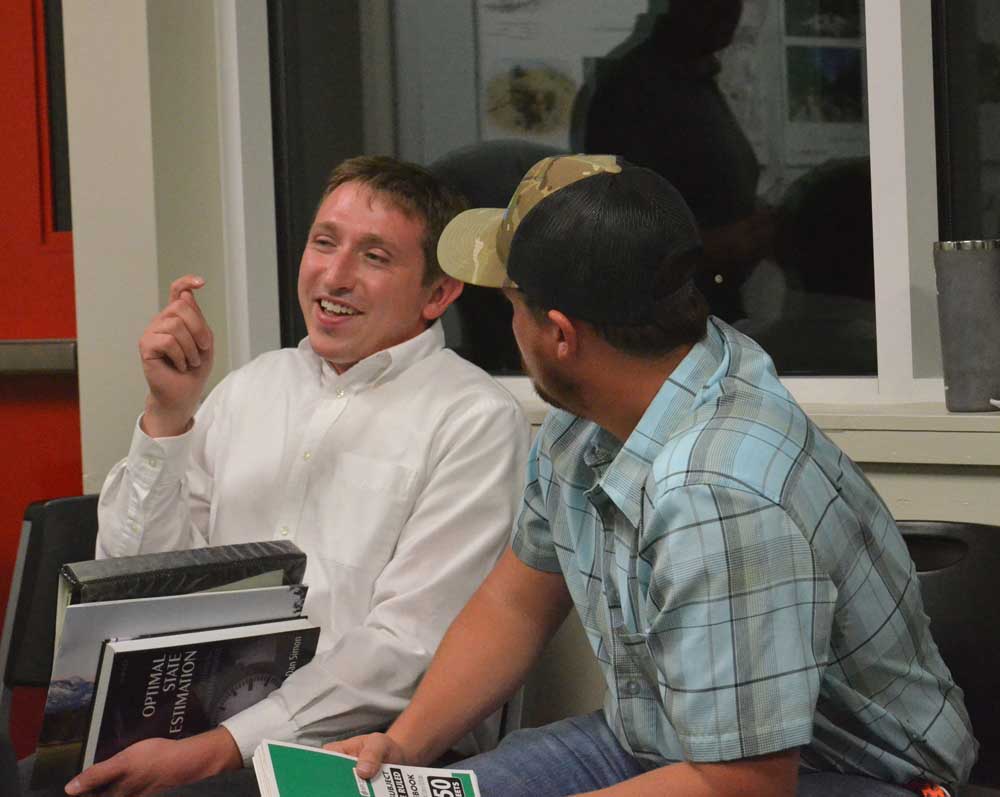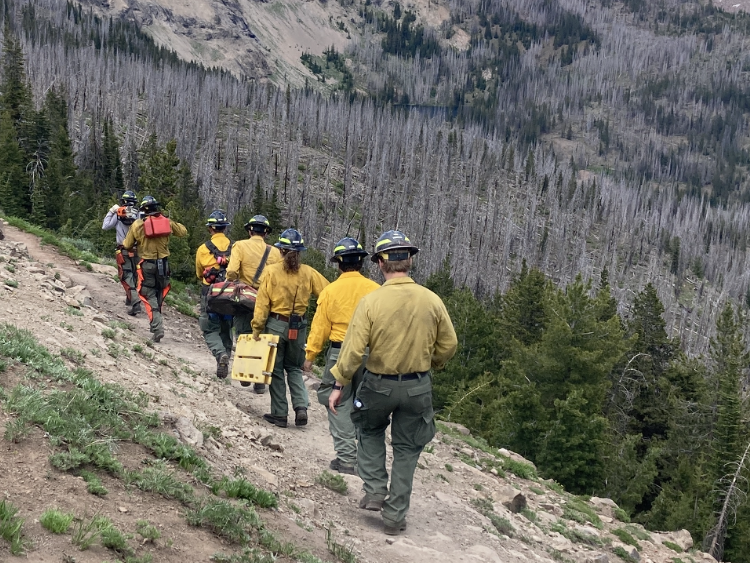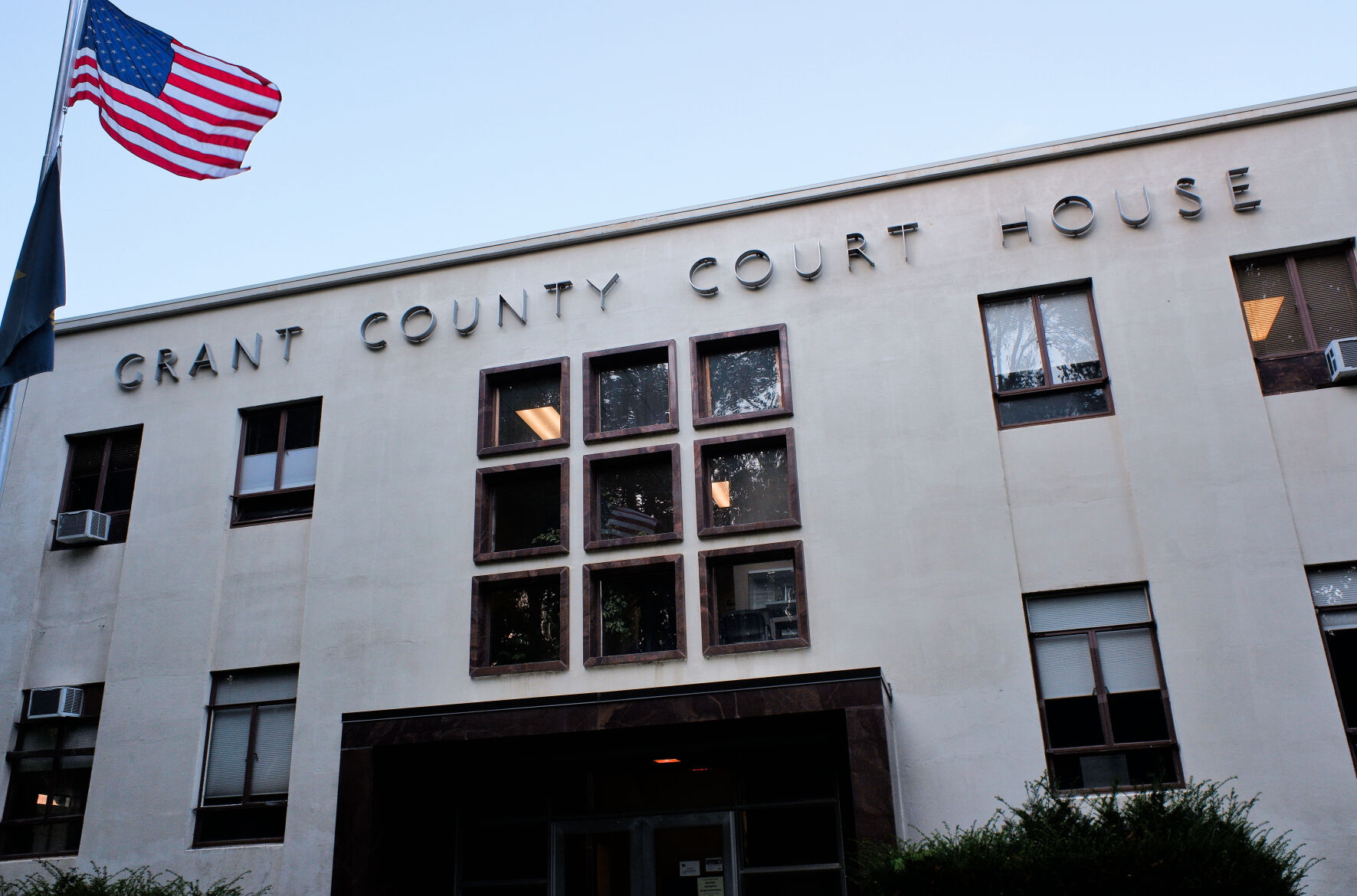Final Innovation Gateway plan presented
Published 1:00 pm Tuesday, September 10, 2019

- Adam Heninger, left, John Day's new agricultural project leader, speaks with his predecessor Matt Manitsas at the Aug. 27 city council meeting.
A final concept plan for John Day’s Innovation Gateway project was presented to a joint meeting of the city council, planning commission and two advisory committees Aug. 27.
Following a tour of the former Oregon Pine mill and other parts of the project site, Ken Pirie, an urban planner with Walker Macy, recapped the project’s history and presented the resulting plans.
Concept plan
The three main Innovation Gateway components were restoration of the John Day River, an integrated parks plan and extending Seventh Street from Bridge Street to Patterson Bridge Road, Pirie said.
Inter-Fluve of Hood River came up with the idea of modifying the channelized John Day River where it ran through historic gold mine dredge tailings into a meandering stream, Pirie said.
The Seventh Street extension would serve as an emergency route, an expansion of the city’s street grid and as a parkway for recreational purposes, he said. The city applied for about $15 million in federal grant funding to finance the Seventh Street extension and other road projects. City Manager Nick Green said the city could learn about the grant award in five to six months.
Green suggested an archway be placed over Highway 26 near Patterson Bridge Road but noted the Oregon Department of Transportation generally doesn’t support permanent structures over state highways. A banner strung across the roadway was an alternative, he said.
Attendee Lisa Weigum noted that banners often get weathered and begin to look tacky. Following additional comments on the idea, Mayor Ron Lundbom suggested asking members of the local artist community for ideas.
Pirie said small wayfaring signs would be needed around the city. Green said most visitors don’t know the John Day River even flows through John Day. Several people warned about sign clutter, and Levi Manitsas suggested using a mobile phone app to help visitors find their way around.
The Innovation Gateway concept plan also includes a new hotel with 60-100 rooms to be built just west of the yellow sawmill building. During discussion about overlay zoning for the project area and height restrictions, Weigum expressed sharp concerns about aesthetics being impacted by such a large building.
Weigum also objected when Green noted that larger setbacks would be needed along the river if the city sells lots in the project area. She noted that she served on the city council when it voted to purchase the Oregon Pine mill site and she believed the council intended to use the site for public land.
She said she was strongly opposed to zoning the project site so it could be sold in pieces. Green responded that protecting the land with some type of conservation measure could be very expensive.
Social benefits
Several committee members raised concerns about whether the Innovation Gateway project benefited everyone in the city equally.
Attendee Rob Raschio noted that the city’s housing crisis was especially hard on lower income working families. The city needed improved housing stock and more affordable housing, he said, and a conversation about this issue needed to be started.
Weigum agreed, noting that the project focused on specific demographics and tourism. She approved of supporting the tourism industry, but she didn’t want to see some city residents left behind.
Councilor Gregg Haberly said focus should be turned on the city’s drug problem. He called for enforcing the laws and ending free handouts. He also suggested crime was more common in the city’s high-density, low-income housing projects.
Lundbom suggested benefits from the Innovation Gateway project would trickle down to the rest of the city. Residents in mobile home parks and low income apartment complexes would eventually be able to buy their own homes, he said.
Raschio agreed that a systemic drug problem existed in John Day, but many residents who need better housing are not criminals. If the city wants to create a sustainable community, lower income residents need to be included.
Matt Hastie, a project manager with Angelo Planning Group who spoke on zoning issues for the project, called the discussion “fascinating” and suggested he could come up with ideas for affordable housing grants.
New parking plan
Green also unveiled a new plan for public off-street parking for the downtown area. His plan calls for acquiring a lot on West Main Street formerly used by Wright Chevrolet and several lots across North Canyon Boulevard from the post office.
Existing parking behind the John Day Elks Lodge could be reorganized, and a small lot on South Canyon Boulevard where the former city hall building stood would serve as a parking lot and charging station for electric vehicles. Green said public restrooms could be built across from the post office and at the West Main Street site.
Green said the city street fund is debt free. He estimated the cost of the needed land at $250,000. Estimated development costs of about $300,000 to $400,000 could come from a local improvement district established among the downtown merchants. With interest rates around 3%, now was the time to act, he said.
Councilor Shannon Adair said she hadn’t yet talked to downtown merchants about the parking plan. It could be a hard sell as they might not recognize the long-term benefits, she said.
If the merchants won’t support the plan, then they should stop complaining, Green said. The city council gave its consensus support to the parking plan. Green said he believed it was attainable.








